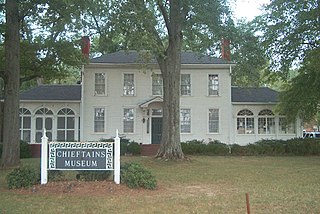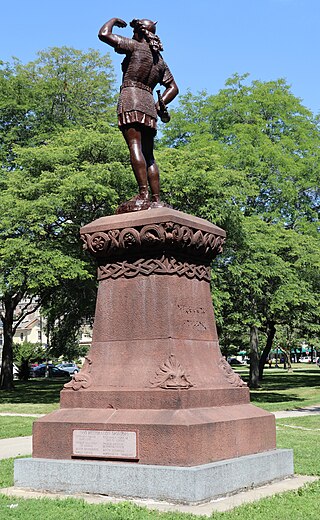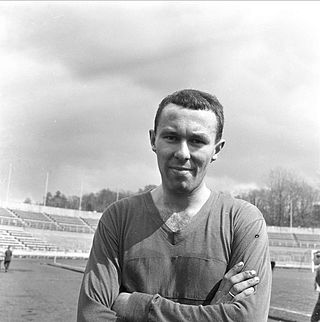
This is a demography of the population of Greenland including population density, ethnicity, economic status, religious affiliations and other aspects of the population.

Erik Thorvaldsson, known as Erik the Red, was a Norse explorer, described in medieval and Icelandic saga sources as having founded the first European settlement in Greenland. Erik most likely earned the epithet "the Red" due to the color of his hair and beard. According to Icelandic sagas, Erik was born in the Jæren district of Rogaland, Norway, as the son of Thorvald Asvaldsson; to which Thorvald would later be banished from Norway, and would sail west to Iceland with Erik and his family. During Erik's life in Iceland, he married Þjódhild Jorundsdottir and would have four children, with one of Erik's sons being the well-known Icelandic explorer Leif Erikson. Around the year of 982, Erik was exiled from Iceland for three years, during which time he explored Greenland, eventually culminating in his founding of the first successful European settlement on the island. Erik would later die there around 1003 CE during a winter epidemic.

Leif Erikson, also known as Leif the Lucky, was a Norse explorer who is thought to have been the first European to set foot on continental America, approximately half a millennium before Christopher Columbus. According to the sagas of Icelanders, he established a Norse settlement at Vinland, which is usually interpreted as being coastal North America. There is ongoing speculation that the settlement made by Leif and his crew corresponds to the remains of a Norse settlement found in Newfoundland, Canada, called L'Anse aux Meadows, which was occupied approximately 1,000 years ago.

The Icelandic Commonwealth, also known as the Icelandic Free State, was the political unit existing in Iceland between the establishment of the Althing in 930 and the pledge of fealty to the Norwegian king with the Old Covenant in 1262. With the probable exception of hermitic Irish monks known as Papar, Iceland was an uninhabited island until around 874.

Events from the 11th century in Canada.

The Chieftains are a traditional Irish folk band formed in Dublin in 1962, by Paddy Moloney, Seán Potts and Michael Tubridy. Their sound, which is almost entirely instrumental and largely built around uilleann pipes, has become synonymous with traditional Irish music. They are regarded as having helped popularise Irish music around the world. They have won six Grammy Awards during their career and they were given a Lifetime Achievement Award at the 2002 BBC Radio 2 Folk Awards. Some music experts have credited The Chieftains with bringing traditional Irish music to a worldwide audience, so much so that the Irish government awarded them the honorary title of 'Ireland's Musical Ambassadors' in 1989.

The FV4201 Chieftain was the main battle tank (MBT) of the United Kingdom from the 1960s into 1990s. When introduced, it was among the most heavily armed MBTs of the era, mounting a 120 mm Royal Ordnance L11 gun, the equal of the much larger specialist heavy tanks then in service. It also was among the most heavily armoured, with up to 195 mm (7.7 in) that was highly sloped to offer 388 mm (15.3 in) thickness along the line of sight.

Leif Erikson Day is an annual observance that occurs on October 9. It honors Leif Erikson, the Norse explorer who, in approximately 1000, led the first Europeans believed to have set foot on the continent of North America.
The Siwanoy were an Indigenous American band of Munsee-speaking people, who lived in Long Island Sound along the coasts of what are now The Bronx, Westchester County, New York, and Fairfield County, Connecticut. They were one of the western bands of the Wappinger Confederacy. By 1640, their territory (Wykagyl) extended from Hell Gate to Norwalk, Connecticut, and as far inland as White Plains; it became hotly contested between Dutch and English colonial interests.

The Pueblo Chieftain is an American daily newspaper published in Pueblo, Colorado. Subsidiary papers include Pueblo Events and The Pueblo West View.
Leivur Øssursson or Leif Øssursson was a chieftain in the Faroe Islands, before they were taken over by Norway in 1035. Leivur's reign marked the beginning of the end of the Viking age, and the end of independence in the Faeroes.

Potassium sulfite is the inorganic compound with the formula K2SO3. It is the salt of potassium cation and sulfite anion. It is a white solid that is highly soluble in water. Potassium sulfite is used for preserving food and beverages.

Chieftains Museum, also known as the Major Ridge Home, is a two-story white frame house built around a log house of 1819 in Cherokee country. It was the home of the Cherokee leader Major Ridge. He was notable for his role in negotiating and signing the Treaty of New Echota of 1835, which ceded the remainder of Cherokee lands in the Southeast to the United States. He was part of a minority group known as the Treaty Party, who believed that relocation was inevitable and wanted to negotiate the best deal with the United States for their people.

Beyond the Gap is a fantasy novel by Harry Turtledove, published in February 2007. It is the first book of the Opening of the World series. The book centers on several citizens of the fictional Iron Age Empire of Raumsdalia, a land whose inhabitants have North Germanic names. Raumsdalia is situated south of a great steppeland which is bordered on the north by a vast, seemingly unending glacier.
Leif Nils Oskar Högström is a Swedish fencer and Olympic Champion. He competed at the 1976 Summer Olympics in Montreal, where he won a gold medal in épée with the Swedish team.

Leif, the Discoverer is a bronze sculpture of Leif Ericson created by American sculptor Anne Whitney. The statue was erected on November 15, 1887 in Juneau Park in Milwaukee, Wisconsin, United States.
Tales of the Vikings is an American first-run syndicated television series, first telecast on September 8, 1959 and ran through June 2, 1960. The series was produced by Kirk Douglas' production company, Brynaprod.
Jesse L. Byock is Professor of Old Norse and Medieval Scandinavian Studies in the Scandinavian Section at the University of California, Los Angeles (UCLA).

Stephen Seymour James Andrew is an Australian politician. He has been the One Nation member for Mirani in the Queensland Legislative Assembly since 2017.

Leif Eriksen was a Norwegian football player and coach. A forward, he spent most of his career in Vålerenga, and became league top goalscorer in 1963. Eriksen represented Norway as a U21, B and senior international.














